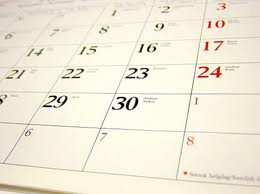If you are wondering how to make a WordPress events list, you are in the right place to find out! There are quite a few ways a WordPress designer or even a WordPress novice can learn how to make a WordPress events list for their WordPress blog. Keep reading to learn more!
For those who are looking to find out how to make a WordPress events list, this tutorial gives you a good look at how you can learn to design your own within the coding of your WordPress admin control panel, or you can use other widgets directly on your WordPress blog to notify your followers as to upcoming events and happenings that relate to your blog. An events list for WordPress is exactly what you would think it is. The WordPress events list can serve many purposes including simply describing what activities you plan to participate in, or if you use your blog to host your online store, you can notify your customers about upcoming promotions, sales and more.
How to Make a WordPress Events List:
The process of learning how to make a WordPress Events list is actually pretty similar to start as you would when you are posting your regular blogging content. You can have your list indicate the by-date in which they will occur to help keep things in chronological order. Basically to start you will create an Events Category. This is where you will be able to post your new and upcoming events. You are also going to want to keep in mind that you don’t want to show any of the older events that have already taken place. Unless you are planning to simply use your WordPress events list as more of a timeline of when certain instances and events took place. However, for this purpose, you are going to want to simply focus on the upcoming events you have going on that you want to showcase on your WordPress blog. In order to attribute the event to a date, you will want to use a custom field called Date with the format: mm/dd/yy.
When you are looking into how to make a WordPress Events list, you can always add the information using a MySQL query. Figure out first where you want to put your events list on your WordPress templates. For easy visibility, you might want to consider using a sidebar to the left or right of the web page. This is where your website visitors will be able to see the events list the best. It is easiest to build your first line of the query with the Where. This tells MySQL how to match up corresponding rows. You can also tell MySQL how to find the event posts. If you want to do this, paste the following in after the header of the MySQL query.
1 2 3 4 5 |
AND wpostmeta.meta_key = 'Date' AND STR_TO_DATE(wpostmeta.meta_value,'%m/%d/%Y') >= CURDATE() AND wposts.post_status = 'publish' AND wposts.post_type = 'post' |
This is where you can have the Date custom field if you wish. You can also use this to show which events have not yet passed and are indeed upcoming events. Use the following to indicate how many events you want to add to the list.
1 2 3 |
ORDER BY STR_TO_DATE(wpostmeta.meta_value,'%m/%d/%Y') ASC LIMIT 5 "; |
In order for the events list to now display, use this and save the results:
1 |
$events = $wpdb->get_results($querystr, OBJECT); |
Now that you have done this part, you are going to want to set it up to loop and to run through each one to be displayed in the list.
1 2 3 4 5 6 7 8 9 10 11 12 |
if ($events): global $post; foreach ($events as $post): setup_postdata($post); ?> <li> <a href="<?php the_permalink(); ?>"><?php the_title(); ?></a> </li> <?php endforeach; else : ?> <li>Sorry, no events coming up.</li> <?php endif; ?> </ul> |
Hopefully using this tutorial, you can create your WordPress events list. There are certain ways you can customize a list like this. Feel free to use your other WordPress designer skills to change things up as you see fit for your WordPress events list on your blog.
